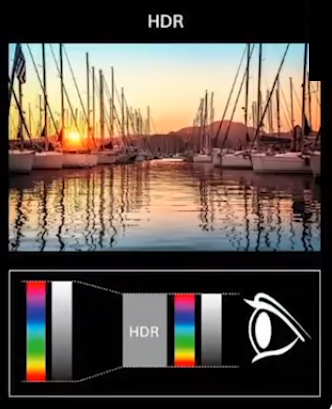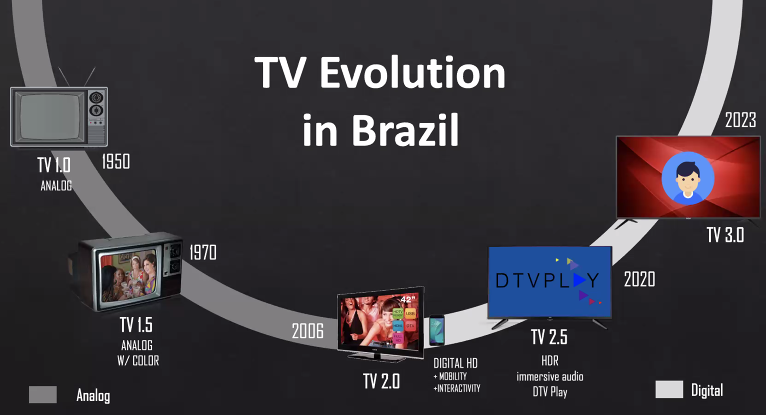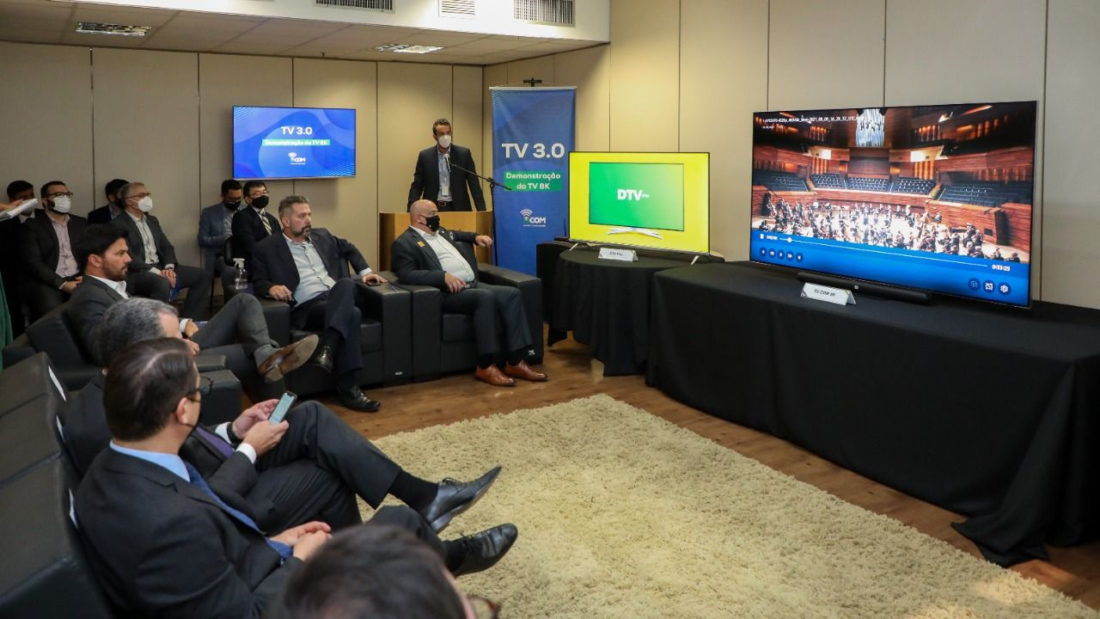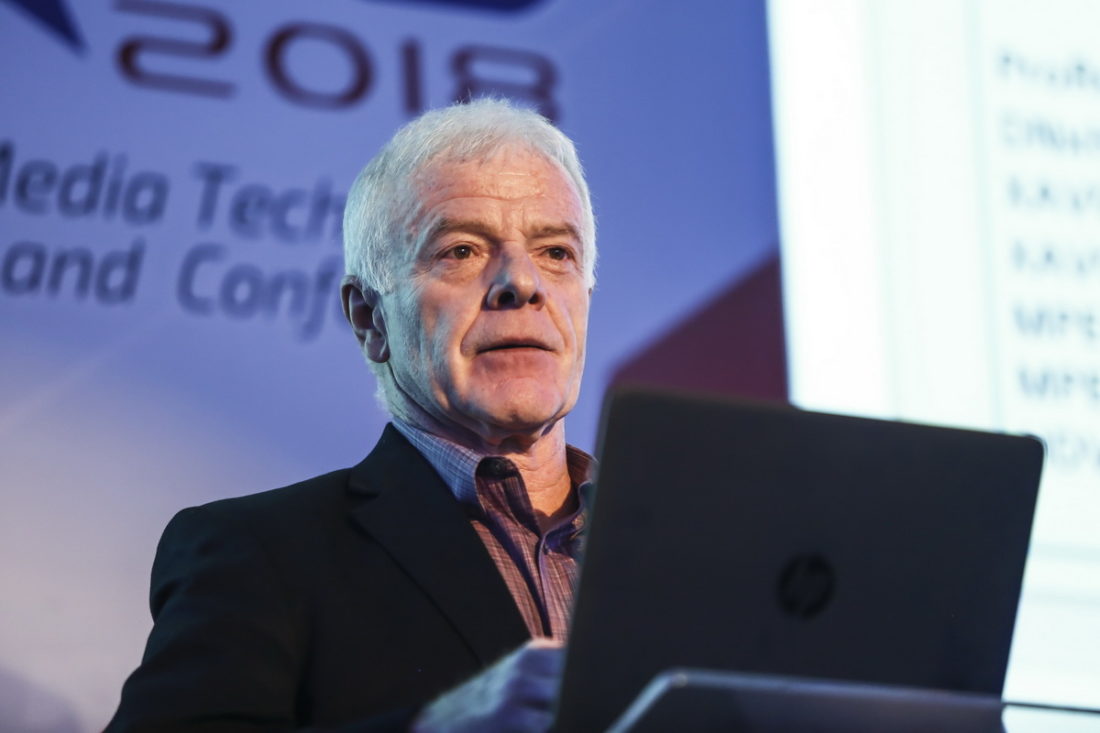
SET Breakfast Seminar Webinar Series: backwards compatible technologies for the evolution of Digital TV in Brazil
The first webinar of the SET Breakfast Seminar Webinar Series was held on Monday afternoon, April 6, and discussed how HDR technologies, immersive audio and DTV Play have contributed to the evolution of the Brazilian digital television model.
The webinar moderator was Luiz Fausto de Souza Brito, coordinator of the SBTVD Forum technical module. He kicked off the activities by showing a timeline of the technological evolution of TV in Brazil.
Marcelo Moreno, member of the faculty of the Department of Computer Science at the Federal University of Juiz de Fora, was the first speaker, describing how the changes in people’s consumption habits are linked to the proliferation of mobile devices and connected TV, whereby today’s viewers divide their time between the TV screen and the screen of their mobile device.

Photo: Luiz Fausto de Souza Brito
In addition, TV is used as an interface for accessing other video services like streaming. That is why, according to Moreno, there was need for more in-depth integration between Broadcasting and broadband.
To achieve this integration, Ginga middleware was upgraded and renamed DTV Play.
As an example of a case study, Moreno showed a Target Advertisement in which it is possible to adapt and personalize advertisements according to the consumption habits of those watching it.
HDR
Alan Stein, Technology Vice President at Interdigital, talked about High Dynamic Range (HDR) technology.
Stein listed several features that HDR allows broadcasters, such as preservation of detail in clear and dark areas. He also talked about the differences between Static HDR and Dynamic HDR. For example, the Dynamic HDR process applies metadata to each scene, providing a more optimized image quality in comparison with Static HDR.
Immersive Audio
Winding up the webinar, Adrian Murtaza, Senior Manager for Technology and Standards at Fraunhofer, talked about MPEG-H Audio, immersive audio technology that allows accessibility, personal selection of the audio version, as well as adaptation for the user’s situation or preference.
“The viewer becomes part of the audience”, Murtaza added.
From the broadcaster’s point of view, MPEG-H Audio permits advanced user interactivity and guarantees that the issuer or the creator of the content is always in control of the products offered to users.







